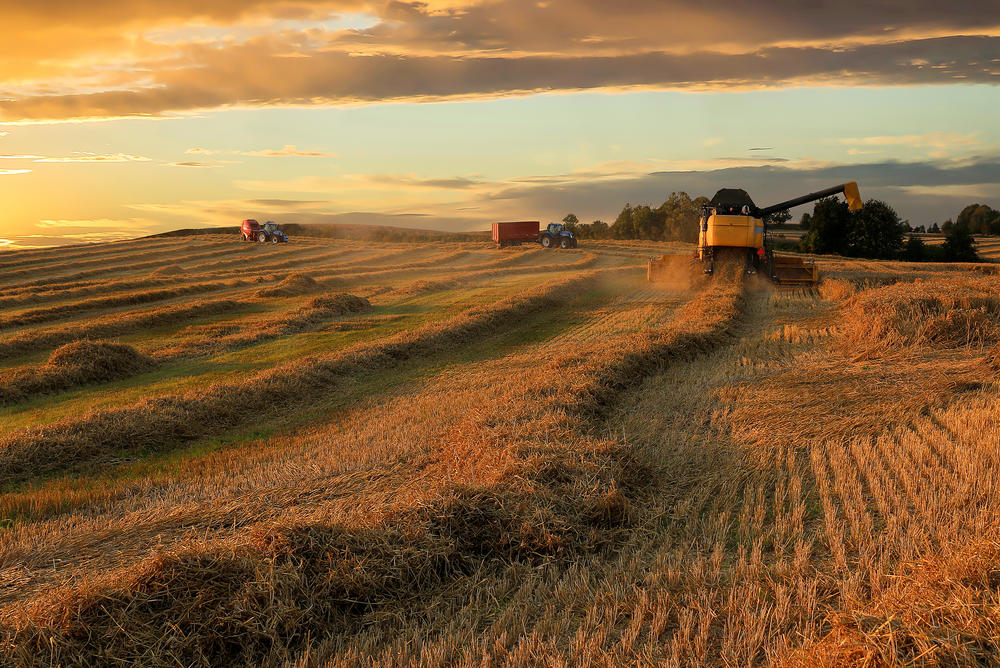Section Branding
Header Content
Food Is Growing More Plentiful, So Why Do People Keep Warning Of Shortages?
Primary Content
There's a common warning about our planet's future: the risk of food shortages.
"We've got a growing world and a hungry world. We need to make sure we do our part in helping feed that hungry world," said Kip Tom, a farmer from Indiana who's currently the U.S. ambassador to the UN's Food and Agriculture Organization, as he closed a panel discussion in 2018.
"That is totally the mantra," says Catherine Kling, an economist at Cornell University. "I'll bet I've been to 50 talks in the last five, 10 years where the beginning is, 'We have to feed 9 billion people by 2050. This is a crisis situation.' The word 'crisis' gets used regularly."
But, in fact, the long-term trend, for more than a century, has been toward ever more abundant food, and declining prices.
To be sure, every once in a while, it really does seem like a crisis. It certainly did in 2008. Tom Hertel, a economist at Purdue University, remembers it well. "This was right in the thick of the biofuel-driven madness," Hertel says, when government policies drove a surge in demand for corn to make ethanol. Rice and wheat prices were spiking for other reasons.
"People were really panicking," he says. Some economists thought that consumers would always experience chronic food shortages and high prices.
Hertel didn't believe it, though. He and his colleagues have a computer model of long-term trends that drive supply and demand for global food, and their model predicted plenty of food, with lower prices.
"So we wrote this paper, 'Debunking the New Normal,' and it was very unpopular," he recalls. "In fact, we weren't able to publish it!"
Eventually, he did find a journal to publish it. And he turned out to be right. Prices soon came back down.
And in fact, the long-term trend, for more than a century, has been toward ever more abundant food, and declining prices. From 1900 to 2000, Hertel says, the number of people in the world quadrupled, yet food prices at the end of the century were only one-third of their starting level.
It's true, of course, that millions of people in the world are hungry or malnourished. But Hertel and Kling say the main reason is that people lack the money to buy food, or because of war and political oppression. Reducing hunger requires addressing poverty and conflict, not just growing more food.
Kling, in fact, is mystified by all the talk about potential food shortages. "Part of the reason may be it's an effective communication device," she says. Farmers and their lobbyists, she says, use the idea that the world needs more food to argue that governments shouldn't impose environmental regulations that might force farmers to pay for all the water pollution they cause, and the wetlands that they destroy. They say, "Oh, we can't possibly impose those costs. Farmers will go out of business and we'll starve," she says.
Even scientists may sometimes have reason to overstate the risks of future food shortages. In 2008, Hertel says, "if you were in the market to raise money for agricultural research, it was a beneficial message."
Also, it's human to worry, and it's easy to think of things that could disrupt the supply of food. For instance, right now, there's climate change.
Tom Hertel has been looking at this. He says there is tremendous uncertainty, but a good chance that food production could get hammered by a warming planet after about 2050.
For the next few decades, though, the trends point toward continuing abundance. Farmers keep finding ways to grow more food on the same amount of land. Population growth, which is the major factor driving the increase in demand for food, is now slowing down.
In fact, U.S. farmers have been so unhappy about low prices for their corn and soybeans and milk in recent years that they've demanded, and received, billions of dollars in government aid. Much of that aid has been justified as compensation for falling prices that followed the Trump administration's trade fight with China, but economists say those prices were declining anyway.
Hertel says this situation gives governments an opportunity to address something more pressing. "The issue is not, can we produce enough food," he says. "It is, can we produce enough food in a way that doesn't destroy the environment."
Farming consumes vast amounts of the planet's land and water. But as farming becomes more productive, perhaps some of that land could be spared. Farmers could turn some cropland back into grasslands, or forest, or wetlands. "If farmers were paid to do this, this could be a very profitable activity, and it could become an important part of their revenue stream," Hertel says. This is already happening in Europe.
This reduces greenhouse emissions. It could help farmers cope with the warming climate, years from now.
Copyright 2020 NPR. To see more, visit https://www.npr.org.


